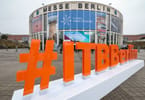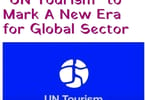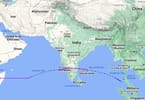When we think of tourism security we tend to think about either criminal acts that often plague the tourism industry such as: pick-pocketing, room invasions, or con artists, or about overt acts of terrorism such as a bomb. Rarely do we consider the hidden forms of terrorism that can impact the tourism industry. These forms of terrorism are often not detected until it is too late and while bombs are public killers actions such as bioterrorism are often silent killers.
The dictionary definition of bioterrorism: “a terrorist acts involving the use of harmful agents and products of biological origin, as disease-producing microorganisms or toxins” only presents a superficial understanding of the subject. Just as tourism is a complex system of interrelated industries that form a composite industry, so too does bioterrorism reflect a wide variety of potential hazards in relationship to the tourism industry.
The following dangers, ideas, and suggestions do not present a complete list. Rather they are meant to force awareness of a clandestine tourism hazard that may cause a great deal of harm while attacking from below the radar. For the purposes of ease of reading we shall use both the term “bioterrorism” and tourism bio-dangers”. The term “tourism biodangers” describes both intentional acts of biological attacks and unintentional biological attacks.
– Bio-dangers are complicated and multifaceted. Bio-dangers can be produced inadvertently and/or on purpose, they can be a be a product of person-to-person interactions, from lack of cleanliness, such as something as simple as dirty plates or poorly washed sheets, and by planned chemical attacks ranging from anything such as air vents or a faulty the refrigeration system. This wide range of diversity means that people in the tourism industry and especially those working in safety and security must constantly be on guard for the unexpected.
– Tourism bio-dangers are not static. A key challenge of tourism bioterrorism or a bio-danger is its changeable nature. What may not be considered a threat in any specific time period may become a threat almost overnight. A second problem in tourism bio-terrorism and dangers is that tourism is highly sensitive to negative publicity. Thus, a bioterrorism act may not actually succeed but the publicity can produce enough negative fall out that the damage is successful even though the attack was a failure. For example, much of the cruise industry suffered a few years ago, from bio-damage due to unexpected outbreaks of the Nordau virus. Although the virus was contained in a relatively short period of time, the damage from the negative publicity was for some time on-going.
– Bio dangers are closely related to biohazards. These include not only biological problems due to lack of good sanitation, problems produced on purpose as acts of terrorism, inadvertent spreading of illnesses, but also hazards that exist naturally in the environment. For example, we cannot call a shark attack or an infestation of jellyfish an act of terrorism, but combined with publicity these problems can impact a tourism locale’s bottom line.
– Tourism biodangers may manifest themselves in multiple ways. For example, a guest may also be a disease carrier. Few tourism sites check their guests, yet a guest may leave a biological hazard in the form of blood, germs, or infectious diseases. These biological hazards are not only not checked (and are often never reported) but the in the case of a hotel or restaurant, the time frame is highly limited as the ability to track the guest once s/he has departed may be close to impossible.
– Some of the tourism bio-dangers carriers may be: guests, tourism employees, delivery people, or even insects. Because tourism serves a diverse and constantly changing population tourism security specialists must not only pay attention to what potential dangers exist within their premises but also the dangers from outside. Thus, an influenza epidemic may be an annoyance to a family but an economic disaster to a tourism place of business. Furthermore, in the modern interconnected world of tourism, a disease or biological danger from one part of the world can easily impact a tourism business in other parts of the world. This interconnectivity is especially true of airports that are major hubs and in which people are consistently transferring from one flight to another.
– Every part of the tourism system is both susceptible and a potential cause of bio-damage. Due to the fact that tourism is all about the intermingling of people, tourism security officials must constantly train personnel on both new and “classic” diseases, on symptoms to report and one things that may seem to be innocuous but do not seem right. Just as in the world of terrorism, when it comes to biological dangers, tourism officials must train staffs and even guests to say something if they suspect something is not right.
– Cleanliness is close to Godliness. The old expression that cleanliness is a form of Godliness is perhaps the best protection against bio-chemical and biological tourism damage. Encourage employees to wash hands on a regular basis, to use disposable tissues when sneezing and then to dispose these tissues in their proper container.
– Make sure that your tourism product does not become a threat to the environment. Environmental threats are not merely tourists trampling native plants or causing damage to sea life. These threats also exist in the urban environment, For example, make sure that trash and garbage is packaged in a way that unwanted animals such as rats are not attracted to your refuse areas. Just as the outside environment impacts the local tourism environment so does the local tourism environment impact its host environment, be that environment rural or urban.
WHAT TO TAKE AWAY FROM THIS ARTICLE:
- These biological hazards are not only not checked (and are often never reported) but the in the case of a hotel or restaurant, the time frame is highly limited as the ability to track the guest once s/he has departed may be close to impossible.
- Bio-dangers can be produced inadvertently and/or on purpose, they can be a be a product of person-to-person interactions, from lack of cleanliness, such as something as simple as dirty plates or poorly washed sheets, and by planned chemical attacks ranging from anything such as air vents or a faulty the refrigeration system.
- Just as tourism is a complex system of interrelated industries that form a composite industry, so too does bioterrorism reflect a wide variety of potential hazards in relationship to the tourism industry.






















